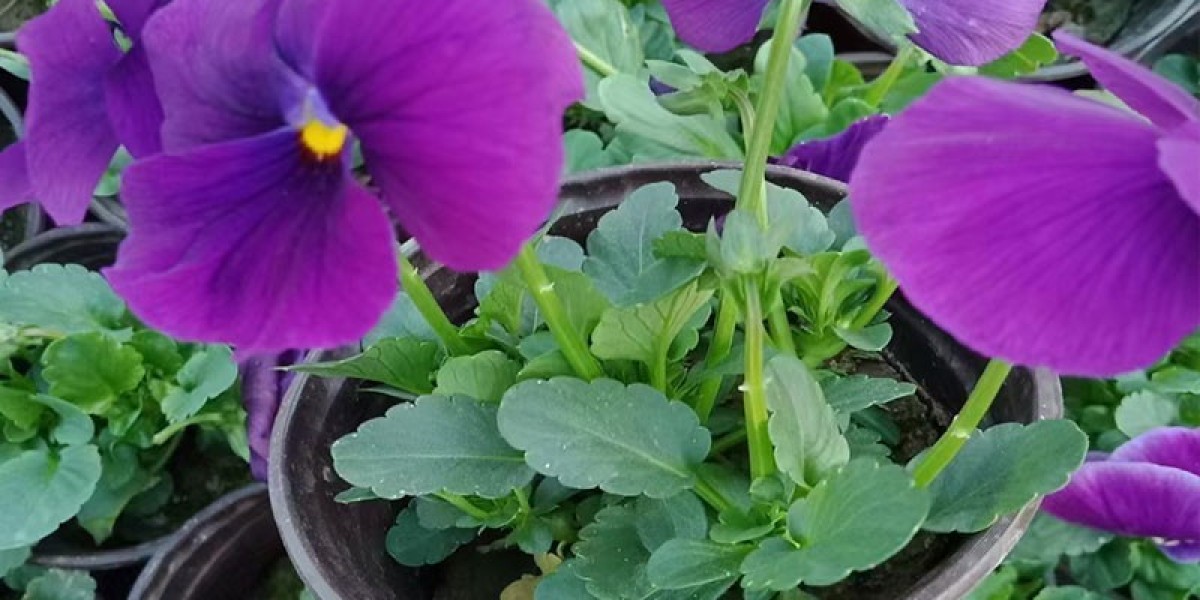I. Georgia's Climate
1. How Climate Affects Pansy Growth
Pansies are cool-weather flowers. They prefer temperatures between 40°F and 60°F. For south Georgia, waiting until October or even early November may be best. Avoiding the still-warm early fall temperatures that can stifle pansy growth.
In north Georgia, consider planting pansies in late September to early October. This timing allows the plants to become established before the cold winter months. It also ensures a robust bloom as temperatures rise in early spring.
2. Popular Varieties for Georgia Gardens
Several pansy varieties perform well in Georgia. For example, Majestic Giants has large blooms, and Matrix offers different colors and strong stems. You should choose heat tolerance and disease resistance varieties. This can also enhance garden success, especially in the warm and humid parts of the state.
II. When to Plant Pansies in Georgia?
1. Early Fall Planting: September to October
The ideal window for planting pansies in Georgia begins in early fall, specifically from September to October. The warm soil encourages rapid root growth. The plants will establish themselves well before the colder weather sets in. This strong foundation is key to winter survival and spring vibrancy.
Consider incorporating a slow-release fertilizer at planting time. This can support their growth throughout the season. Allow about 6 to 8 inches between plants. This will ensure adequate air circulation. The spacing also gives each plant enough room to grow and spread without competition.
2. Late Fall Planting: November to December
If you miss the early fall planting window, late fall, from November to December, offers a second chance. Though the soil is cool, you can still successfully plant pansies. Click the website to get more detailed.
The plants are less likely to experience pest problems. Additionally, the cool temperatures reduce the need for frequent watering. You should protect young plants against the first few frosts of the season. Consider covering your pansies with frost cloth.
Mulch around the base of the plants. This provides extra insulation from cold temperatures. This layer of protection can ensure the survival of your pansies through unexpected cold snaps.
III. Steps for Planting Pansies in Georgia
1. Soil Preparation
Testing your garden soil using a home test kit. You can also seek the assistance of your local extension service. Mix organic matter in heavy clay soils. For example, compost or well-rotted manure.
2. Selecting Healthy Pansy Plants
Consider the mature size of the plants and their color. Closely inspect pansy plants before purchasing. Healthy pansies should have vibrant, robust foliage without spots or damage. Avoid plants with yellowing leaves or signs of mildew.
3. Planting Technique
Place pansies at the same depth as they were growing in 1 gallon pots. Dig holes that accommodate the root ball comfortably. Ensure there's enough room without crowding the roots.
Plant pansies 6 to 8 inches apart. This allows for adequate air circulation and growth. This spacing helps prevent disease. Each plant will have enough room to develop fully.
Water your pansies thoroughly after planting. This settles the soil around the roots. Maintain consistent moisture can support their growth and flowering, especially during dry spells.
IV. Pansy Care Tips for Georgia Gardens
1. Watering Schedule
During cool months, watering once a week might suffice. But be prepared to increase this frequency during dry spells. You can employ a drip irrigation system. Water at the base of the plants early in the morning. This minimizes moisture on the foliage and reduces diseases.
2. Fertilizing Guidelines
Apply a slow-release fertilizer at planting and again mid-season. Over-fertilizing can harm your plants. So stick to the recommended amounts and timing for the best results.
3. Mulching Practices
You need to keep the mulch away from the plant stems. This can prevent rot. Mulching conserves water and keeps the roots cool. Organic mulches are ideal for pansies in 1.5 gallon pots. For example, pine straw or shredded bark.
4. Pest and Disease Management
Common pests and diseases include aphids, spider mites, and downy mildew. You should regularly inspect your plants. Neem oil and insecticidal soaps can against pests without harming beneficial insects. Targeted chemical treatments may be necessary in cases of severe infestation or disease. Always follow the application instructions carefully.
V. Overwintering Pansies in Georgia
1. Protecting Pansies During Colder Months
A generous layer of mulch acts as a blanket. It can retain soil warmth and moisture. This insulation is crucial for root protection. Roots are less tolerant of cold than above-ground plant parts. Covering your pansy beds with frost cloth or even a light blanket. Remove the coverings during the day. This allows for sunlight penetration and air circulation.
2. Monitoring Pansies for Signs of Stress
Winter stress in pansies can manifest as discoloration, wilting, or stunted growth. Regular monitoring of your plants will enable early detection of these signs.
Assess the soil moisture level if noticing any signs of distress. Both overwatering and underwatering can cause harm. Adjust your watering regimen according to needs. Consider applying a balanced fertilizer to provide essential nutrients and encourage recovery.







